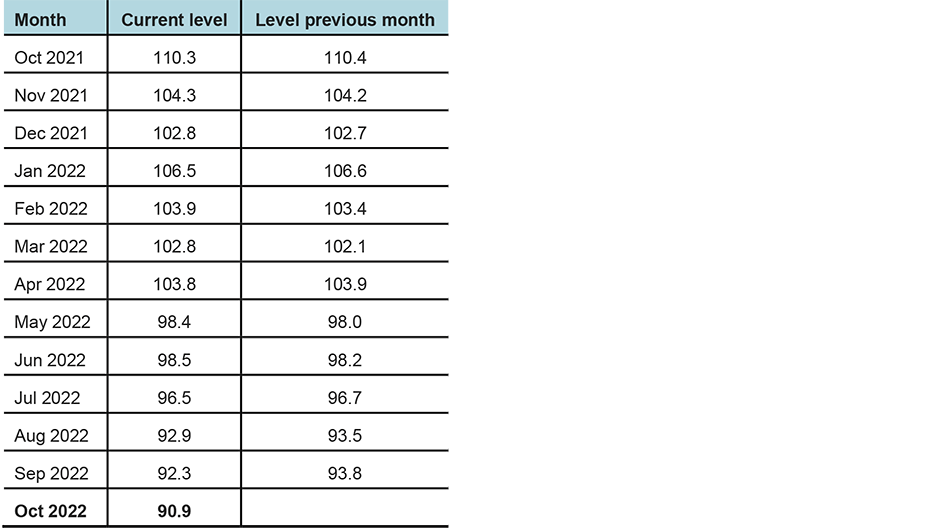KOF Employment Indicator has peaked for the time being
For the first time in over two years the KOF Employment Indicator is falling. Starting from a high level, the employment outlook for the next three months in particular is deteriorating. The manufacturing sector is being especially squeezed.
The KOF Employment Indicator is no longer continuing its steady climb of the past two years and has fallen from 16.0 points (revised from 17.2) to 14.3 points in the current quarter. Although the indicator is still well above its medium-term average, this decline could be an initial sign that the challenging economic environment will also be reflected in the employment figures. The deterioration in the employment outlook can already be seen retrospectively in the survey results for August. The indicator value from the third quarter was therefore revised downwards from 17.2 points to 16.0 points based on the survey results from August and September.
The KOF Employment Indicator is calculated from the quarterly KOF Business Tendency Surveys. The evaluations for the fourth quarter of 2022 are based on the responses of around 4,500 firms that were surveyed in October about their employment plans and expectations. On balance, a clear majority of the companies surveyed still reckon that their current staffing levels are too low. In addition, there are still significantly more businesses that are looking to increase their workforces in the next three months than firms that are planning to reduce their headcount. The KOF Employment Indicator thus points to overall employment growth in the Swiss labour market over the current and subsequent quarters.
Employment outlook for banks and manufacturing becoming gloomier
The KOF Employment Indicator has not changed for most sectors and remains high. The exceptions here are manufacturing and banks. The indicator for manufacturing has fallen from 9.2 points to 0.7 points and is now only slightly above its long-term average. A small majority of the firms surveyed in the manufacturing sector are even expecting their staffing levels to decline over the next three months. The banking sector is also becoming less optimistic about the employment outlook, which is approaching its long-term average.
Past experience has shown that the KOF Employment Indicator for manufacturing predicts actual employment trends in the sector very accurately. Since manufacturing is more exposed to cyclical changes than other industries, the indicator for manufacturing often anticipates labour market trends in other sectors.
KOF Employment Indicator
The KOF Employment Indicator is calculated on the basis of the quarterly KOF Business Tendency Surveys. As part of these surveys, KOF asks private businesses in Switzerland to assess their current staffing levels and to state whether they intend to change them over the coming three months. A positive indicator figure means that the number of surveyed companies considering staff cuts in the reference quarter is smaller than the number of companies intending to create jobs. It has been shown in the past that these assessment anticipate actual trends on the labour market.
Click here for more information about the Indicator and its methodology.
Contact
KOF FB Konjunktur
Leonhardstrasse 21
8092
Zürich
Switzerland
